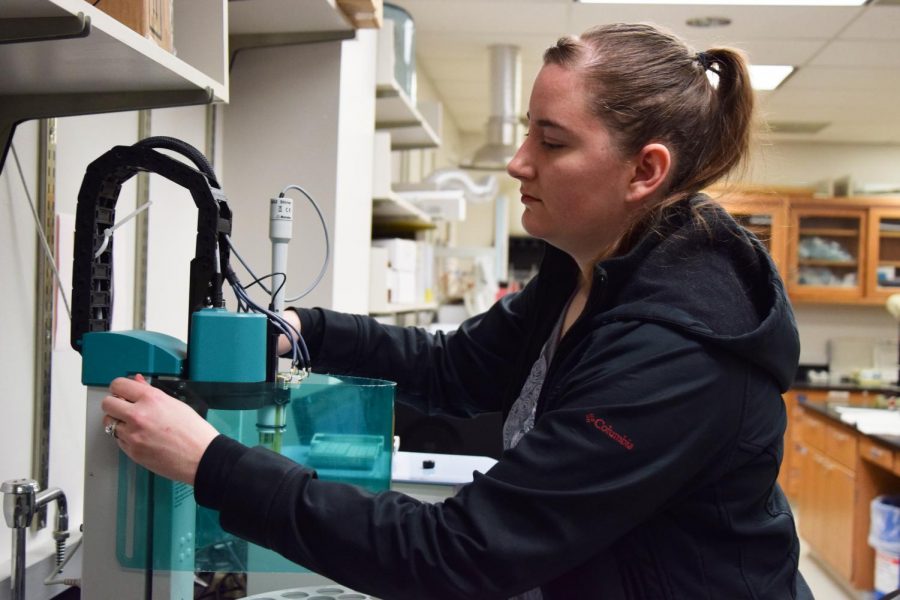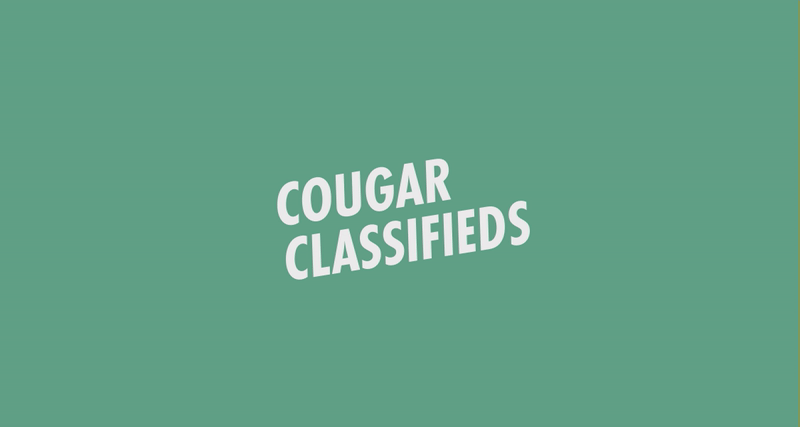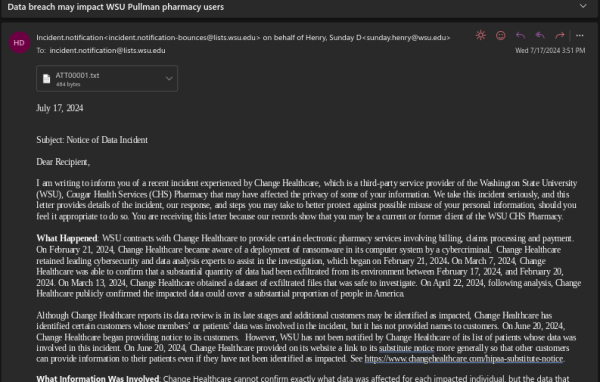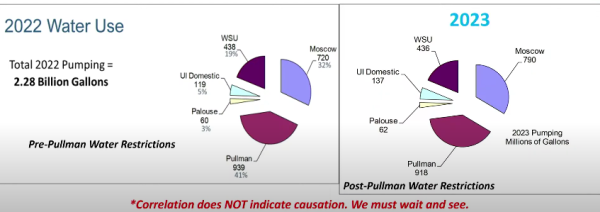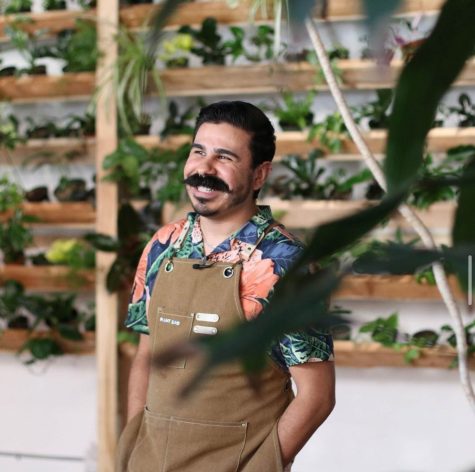Wine research could control taste, alcohol levels
Two-faceted research includes different types of yeast, electronic tongue
JOSEPH GARDNER | THE DAILY EVERGREEN
Victoria Paup, a doctorate student in the School of Food Science, explains her research regarding wine as she demonstrates the proper usage of the electronic tongue, which is used to identify different tastes in wine.
April 10, 2019
WSU researchers may change the future of the wine industry with their research into wine flavor and aroma.
Victoria Paup, a doctorate student in the School of Food Science, has been doing two-faceted research regarding wine and its taste. She said the first involves the types of yeasts that are used in the fermentation of wine.
Charles Edwards, professor in the School of Food Science, said the most commonly used yeast in wine-making is Saccharomyces yeasts.
“Without that organism, it would be really tough to enjoy a beverage on Friday afternoon,” Edwards said.
Paup is researching non-Saccharomyces yeasts, which Edwards said refers to the type of yeasts that are naturally present on the grapes. He said Paup is trying to figure out which yeasts can be useful and which ones are not.
Paup said the main aspects of wine that impact its quality are aroma and flavor, as well as the mouth-feel. She is hoping to use non-Saccharomyces yeasts to increase the quality of the wine.
“If we can use this non-Saccharomyces yeast in wine production, it could potentially be a way to increase those attributes and increase the end quality without having to invest a lot of money or change much,” she said.
Edwards said understanding non-Saccharomyces yeasts will allow winemakers to add different sensory characteristics to their wines.
“This will give winemakers another tool in their toolbox that they could use to make different types of wines,” he said.
These type of yeasts also help control the alcohol level in wines, Edwards said. The sugar content in grape must, the starting point for fermentation, has gone up and creates more alcohol when the wine is made.
Some of the non-Saccharomyces yeasts metabolize the sugar and result in lower alcohol content in the final product, he said.
Paup said the second facet of her research is using an electronic tongue to assess wine quality. She said they inoculate wine and then see if the electronic tongue can detect the changes more quickly than before.
The hope is that the electronic tongue is able to pick up on the changes before a consumer can, she said, so that wine with weird flavors are not released to consumers.
“That will give us the ability to add different additives to make sure it does not continue so that we do not get that decrease in quality and wine that smells terrible like an animal,” Paup said. “Trust me it is not a fun smell.”

